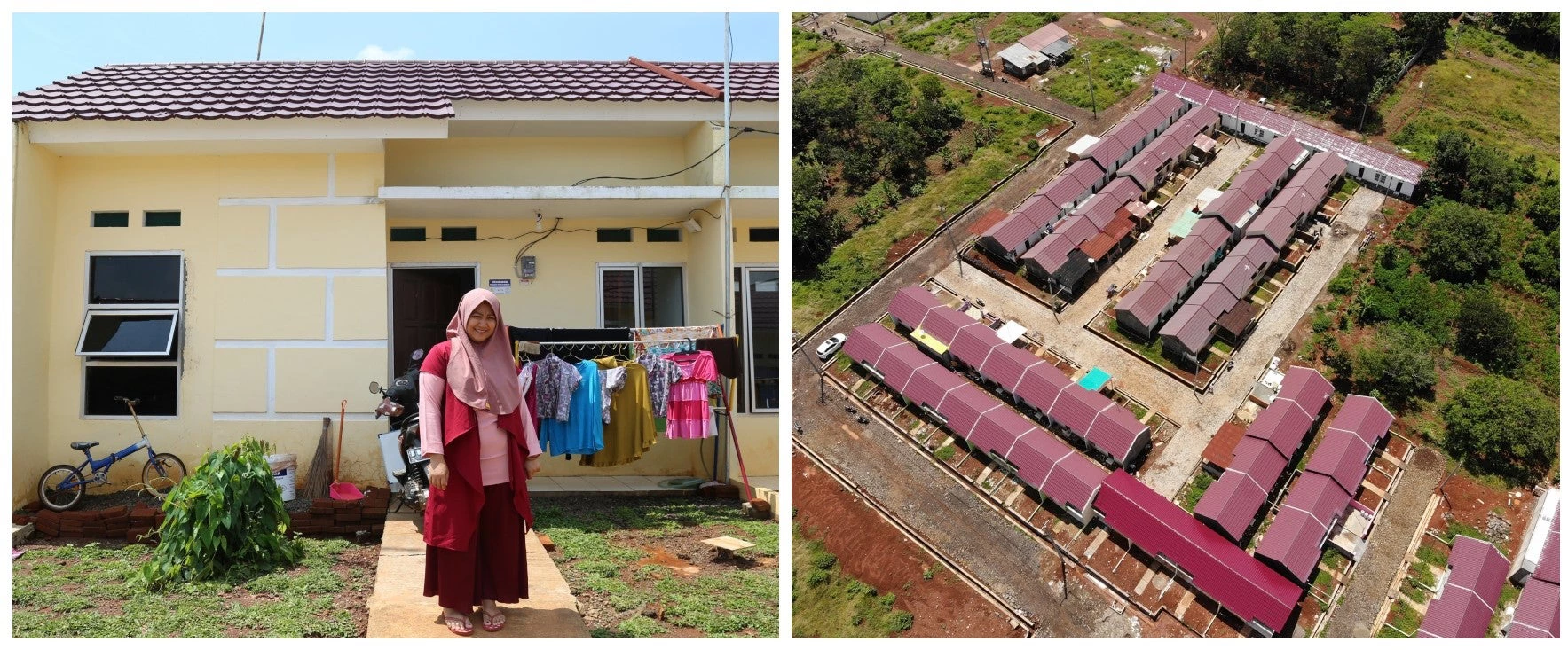 Griya Garuda Lima Subang, an EDGE-certified housing project in Indonesia
Griya Garuda Lima Subang, an EDGE-certified housing project in Indonesia
Housing is an essential need, but housing construction may not always be climate-friendly. Globally, the buildings and building construction sector generates about 40 percent of total direct and indirect CO2 emissions. Constructing “green” buildings that can save energy and are resource efficient will be key to easing the climate impact of the housing sector. In addition, resource-efficient green buildings can reduce water use and lower utility costs, a particular benefit for low-income households, who can spend up to 20 percent of their disposable income on utilities . However, the perception that such construction is costlier may hold it back.
A new World Bank research study analyzes how an auction system could encourage greater construction of climate-friendly low-income housing in Indonesia, where demand in this area has grown significantly and is expected to expand steadily as economic growth improves the welfare of many households. The Climate Auction Model is an innovative, pay-for-performance mechanism piloted by the World Bank Group to stimulate investment in projects that reduce greenhouse gas emissions while maximizing the impact of public funds and leveraging private sector financing.
There is scope for more construction of environmentally friendly low-income housing in Indonesia. Despite green building criteria introduced by the Ministry of Public Works and Housing, there has not been an increase in the construction of low-income housing that meets the International Finance Corporation’s EDGE (Excellence in Design for Greater Efficiencies) green-building certification, which calls for a 20 percent reduction in water, energy, and embedded energy in materials, compared to a base-case building. There has also not been a shift in regulations requiring that green construction be part of government housing subsidy programs.
Lower emissions, cheaper utilities
The lag in such construction misses two important opportunities. First, housing investments by the government and families are failing to take advantage of the chance to lower greenhouse gas emissions associated with the housing and construction sectors. Second, builders are passing up the chance to lower utility costs for low-income households.
For developers, the additional costs of building green-certified homes are not substantial. Upgrades that include energy-saving lighting, low-flow faucets, and reflective outdoor paint to reduce heat, or other components to achieve the 20 percent resource efficiency that meets EDGE standards add additional costs of 5 to 7 percent for landed housing and 3 to 6 percent for apartments.
The research shows that housing developers will still expect appropriate financial support and regulations as incentives to build green. Depending on the housing type and location, incentives required range from US$ 5.60 to US$ 21.80 (Rp 80,000 - 309,000) per m2 of EDGE-certified low-income housing.
For households, the case for green housing is compelling. Based on calculations in four cities (Jakarta, Bandung, Semarang, and Balikpapan), each square meter of a landed housing unit with EDGE standard certification can save about 20 kWh electricity, 1,000 liters of water, and reduce CO2 emissions by 16 kg annually. This means that an average 30 m2 low-income household could cut utility bills by up to US$ 63.50 (Rp 900,000) annually.
Big savings
The additional costs of building EDGE-certified housing can be recouped with utility bill savings within three years. However, low-income households that are unable to shoulder high up-front costs are less likely to be able to afford the higher expense of an EDGE-certified house, as developers pass these costs on to home buyers.

Figure: Benefits of an EDGE Standard-certified home compared to a conventional home for a low-income family
From a macro level and climate policy perspective, these savings could make a significant impact. Building 200,000 low-income housing units using assumptions of construction cost in Bandung, West Java could result in 122 GWh/year in electricity savings and 7 million m3/year in water savings, equal to a savings of as much as US$ 12.4 million (Rp 175.9 billion) on utility bills annually. To achieve these savings, the government would need to supplement construction costs with around US$ 43.35 Million (Rp 614.8 billion). Under this scenario, every ton of CO2 reduction would cost around USD 17.4 (Rp 246,800).
To take full advantage of these savings opportunities, the World Bank Group is providing support to the government of Indonesia and is exploring cost-effective solutions to deliver maximum impact for housing subsidy programs . One way to incentivize the construction of green low-income housing is the climate auction model: housing developers can bid on price guarantees that will be offered to those who are able to deliver housing that achieves a targeted level of savings or certification standards at the lowest cost.
While green policies, regulation, and the promotion of green standards will remain essential to promote the construction of green buildings, innovative incentives such as the use of auctions or financial mechanisms such as carbon credits are also part of the solution. While building environmentally friendly homes for low-income families need not incur significantly higher construction costs, the government can also moderate developers' risk perceptions by providing incentives that show how building low-income housing to greener standards offers a win-win proposition for both homeowners and the climate.



Join the Conversation